You reckon cheap and cheerful mid-capacity nakedbikes are boring? You’re doing it wrong
Welcome to Dumb & Dumber 2023, our annual pilgrimage to the alpine areas around Mount Kosciuszko on motorcycles largely unsuitable for the snow- and ice-covered roads. It’s where, as well as a healthy dose of tomfoolery, we put motorcycles, gear, endurance and our mental fortitude to the test.

This year we’re combining the usual D&D shenanigans with a shootout of three mid-capacity parallel-twin nakedbikes. Honda’s CB750 Hornet and Suzuki’s GSX-8S have joined Yamaha’s MT-07 for 2023 and, because they’re so remarkably similar on paper, we’ve been itching to put the three of them up against each other. Deano rode the GSX-8S and I rode the Hornet at their respective Australian launches, and both of us came back mightily impressed. And like many others, I’ve also been won over by the capability of the MT-07.

Nutting it out
To determine a winner, we scored each bike against six criteria: engine performance, brakes, handling and suspension performance, ergonomics, electronics and value for money. All three riders gave a score out of five on each bike’s individual criterion, with one being poo and five being bloody awesome. We also weighed the bikes, measured the rider triangles and monitored fuel consumption.
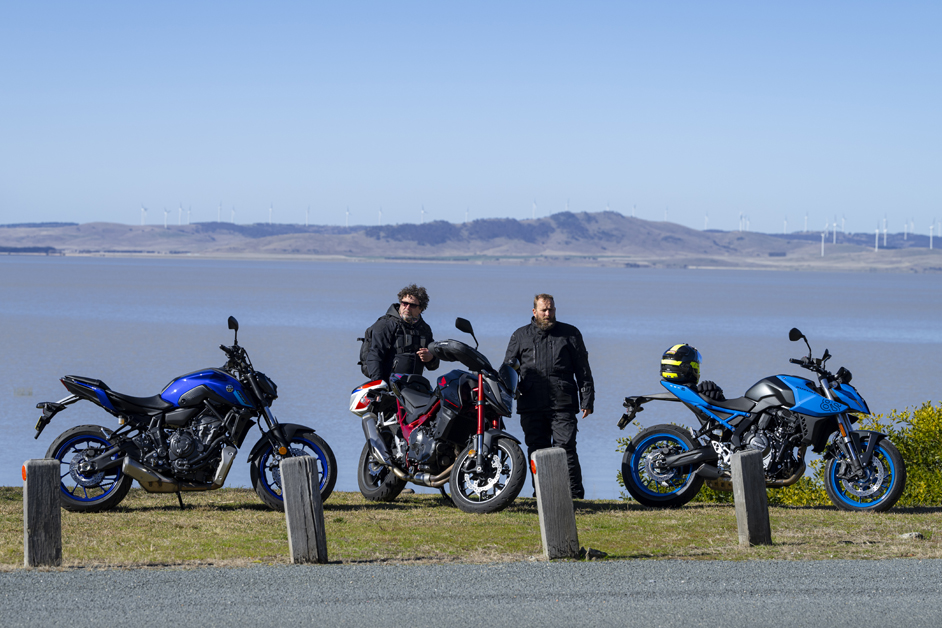
I know some people think these sorts of bikes are boring – I’ve seen this rubbish posted on our social channels – but I can tell you, none of these bikes are boring. Yes, we froze our arses off thanks to the lack of weather protection or heated do-dads, but all three of us had a ball over the three-day jaunt. If you can’t have fun on one of these three machines, I promise you, you’re doing it wrong.
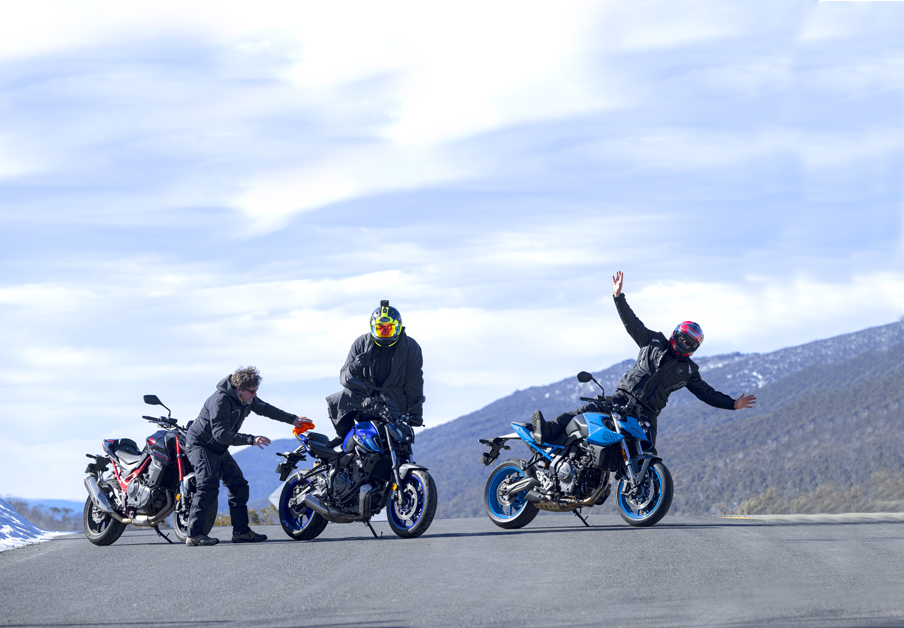
In contention
Due to a lack of any real competition, the MT-07 has owned this market segment for a few years now, but that solo party has been crashed now with the arrival of the Hornet and GSX-8S. A quick glance at the specs and the price made Yamaha’s once-steadfast place at the top of the segment look shaky.
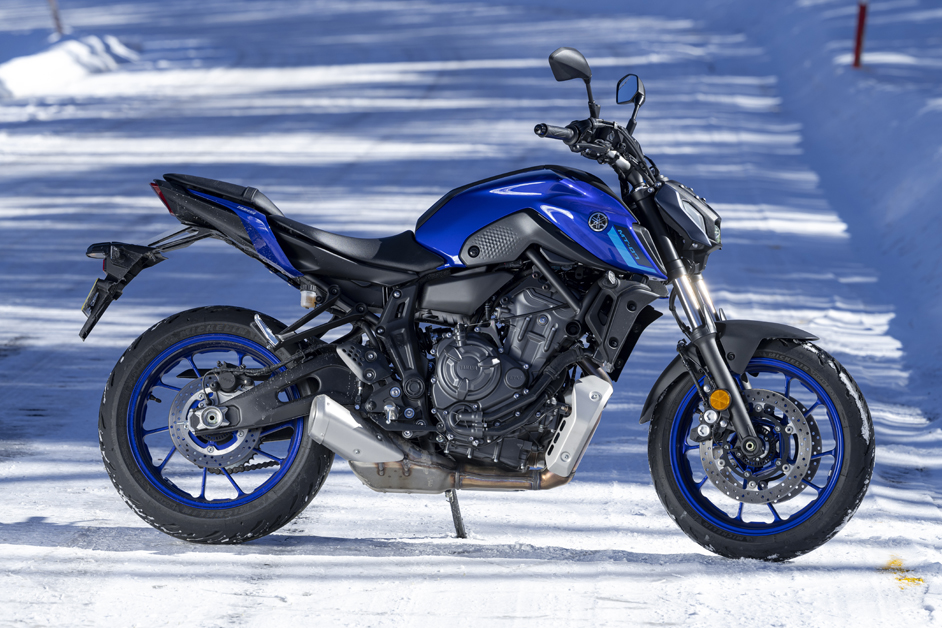
The gate-crashers offer more cubes, radial-mounted brakes, upside-down forks and a suite of electronic rider aids. And, in the case of the Suzuki, a two-way quickshifter and some aggressive good looks. Not only do you get less equipment on the Yamaha, but its ride away price is $259 more than the Suzuki and around $890 more than the Honda.
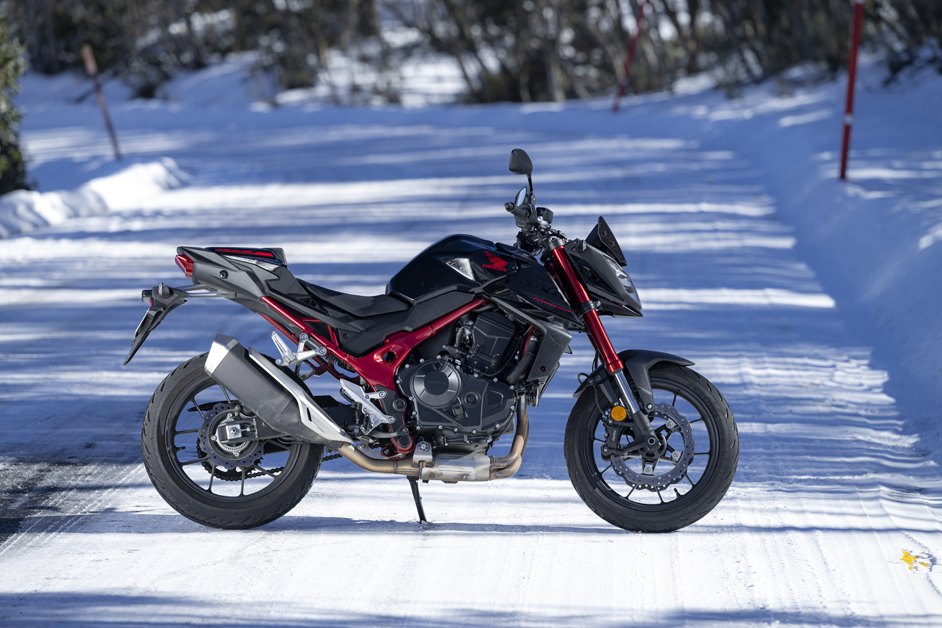
But bikes are more than the sum of their parts, we know this, so we suited and saddled up and set off in search of a string of beautiful and dangerous roads to see which bike would rise best to the challenge.
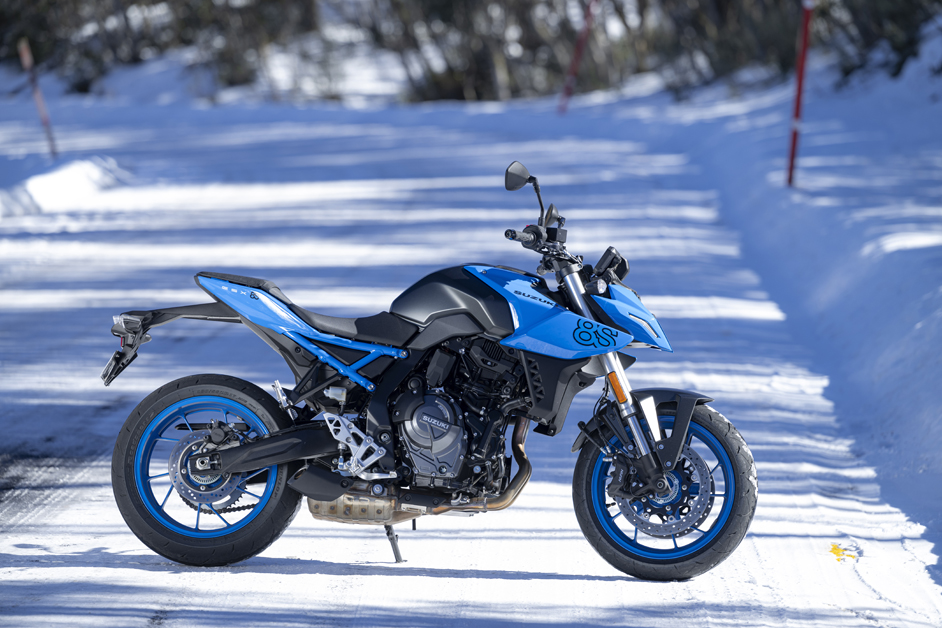
The engine room
With a claimed output of 67.5kW (90.5hp) at 9500rpm, the Honda’s 755cc mill is the powerhouse of the group. It does give a little away to the Suzuki in the torque department, though, with the GSX-8S’s 78Nm chiming in 450rpm earlier than the Honda’s 75Nm at 7250rpm. But the Suzuki’s 61kW (82hp) at 8500rpm is no match.
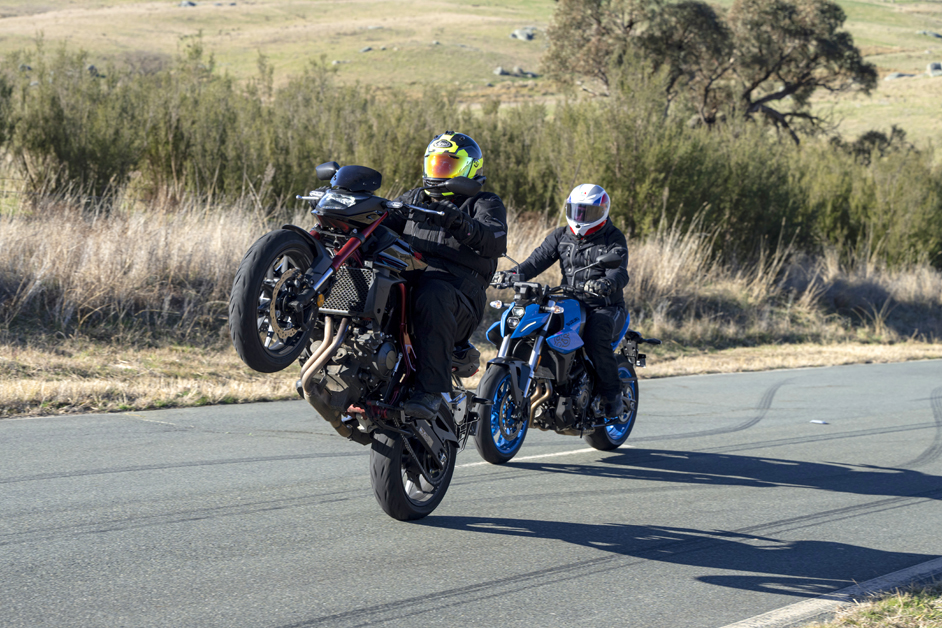
The Yamaha’s 689cc engine is at a disadvantage cube wise, although at lower speeds it’s punchy and, compared to the other two, doesn’t feel as weak as the figures might suggest. It’s only when the revs climb that the Honda and Suzuki stretch their legs and pull away from the Yamaha. If your riding consists of fanging around town and hooning – something the Yamaha is particularly good at – then the MT’s 54kW (72hp) at 8750rpm and 67Nm at 6500rpm is plenty enough to keep you amused and well ahead of the traffic.

Despite the superior torque output and getting its max power to the ground 1000rpm earlier than the Honda, you’d assume the Suzuki would feel like it has the most grunt. But it doesn’t translate to real-world feel. Both the Honda and Yamaha will pop a wheelie in third, for example, while the Suzuki needs a serious blip of the throttle and compression of the front suspension to loft the front wheel. As well as shorter gearing on the Honda and Yamaha, I put it down to their softer rear suspension and rear weight bias. Speaking of wheelies – no Access letters, please! – the MT-07 has the reputation of being one of the best wheelie bikes around, but it’s time to step aside because the Hornet is now king – anyone can wheelie the Hornet.
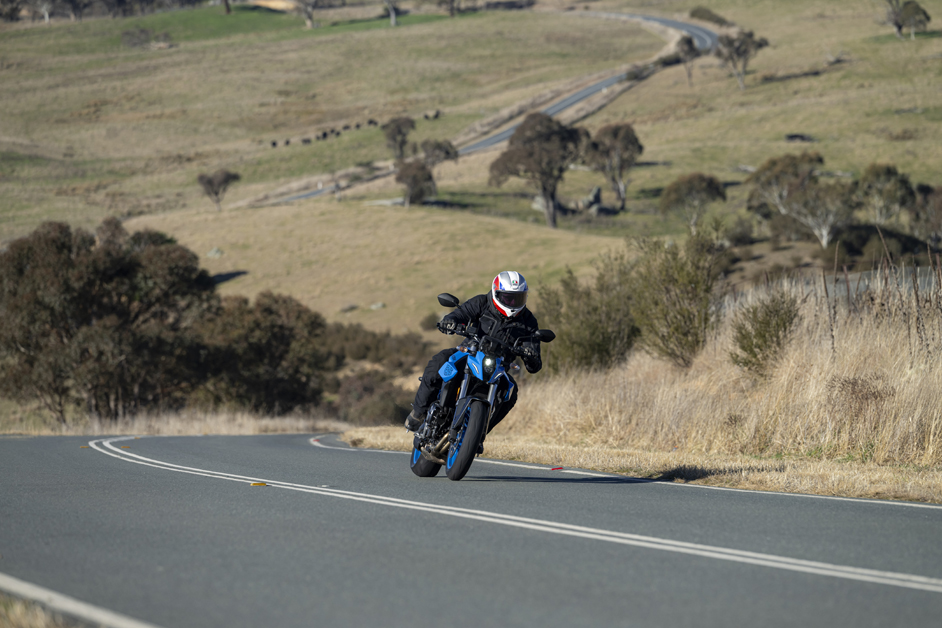
The Suzuki’s engine is very refined; it’s almost four-cylinder smooth and the exhaust is quiet and lets little of the 270º-crank-infused sound escape. The Yamaha and Honda have a rawer feel to their engines, but while the Yamaha is muffled by its underslung exhaust, the Honda has a pleasing bark from its more traditionally styled exhaust. All three have enough performance to keep anyone happy, safe and entertained.

They all employ a six-speed gearbox and all work in a typically smooth and positive Japanese fashion. The Honda responds with a loud clunk when you knock it into first, but otherwise the Honda’s box didn’t give me any trouble at all. Sean reported some issues with shifting but I never found it.
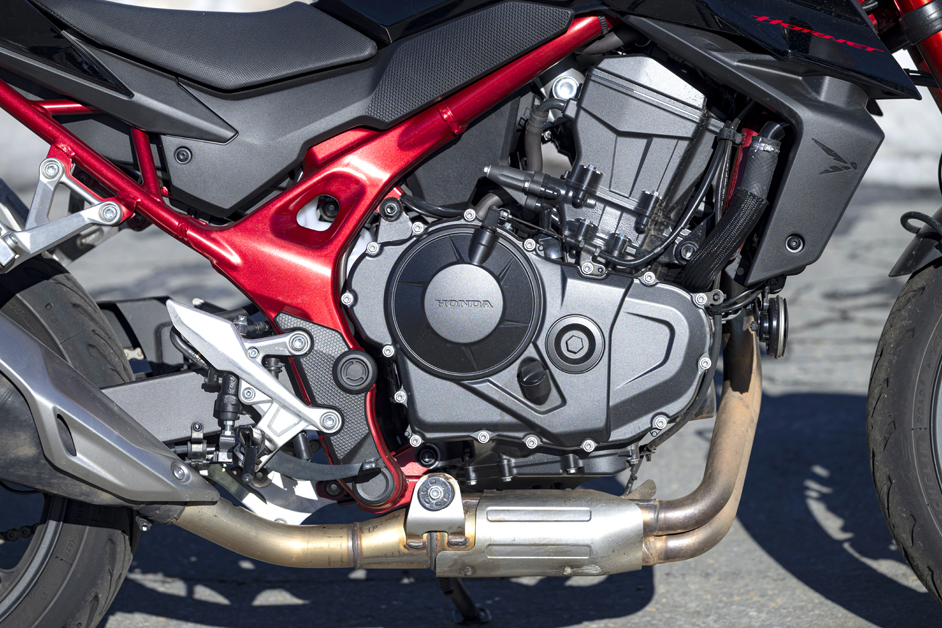
The Honda was equipped with the optional two-way quickshifter ($397.22), Yamaha also offers an up-only quickshifter for an additional $234.95, while the Suzuki comes with a two-way unit as standard fitment, which is a massive bonus.
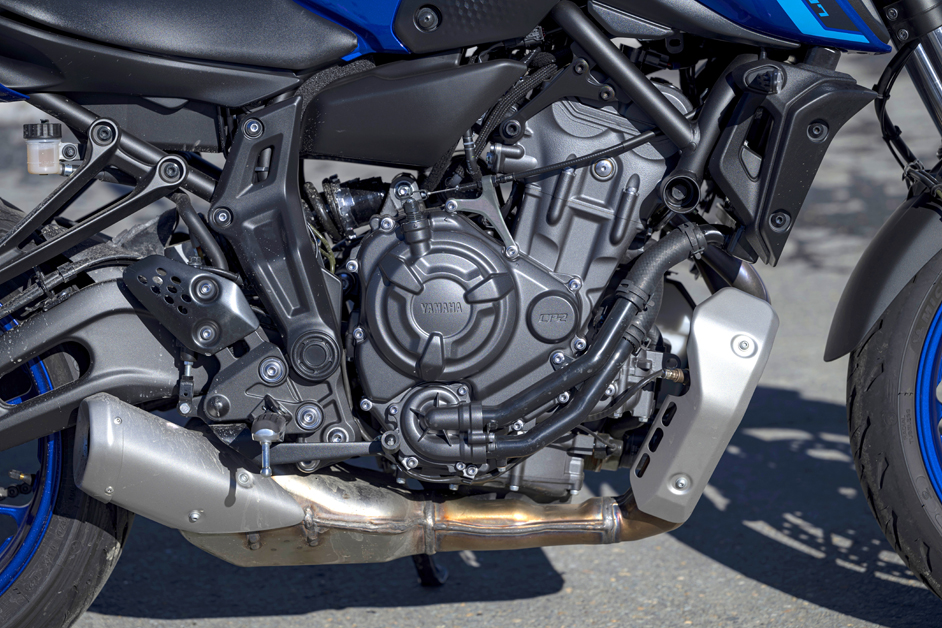
The Honda wins out here because of its grunty and versatile performance and pleasing exhaust note. I loved the Hornet’s parallel twin when I first rode it, and I still love it now. It’s got character – far more than you’d expect from a Honda parallel-twin frankly – but you’d need to cough up the $400 for the optional quickshifter.

Suspension and handling
Given their affordable price points, suspension performance was always going to be the limiting factor with these bikes. If you’re after a mid-capacity naked with more grunt and better suspension then you need to be prepared to open the Aprilia, Ducati, KTM or Triumph catalogue… and you’ll need your bank balance to step up accordingly.
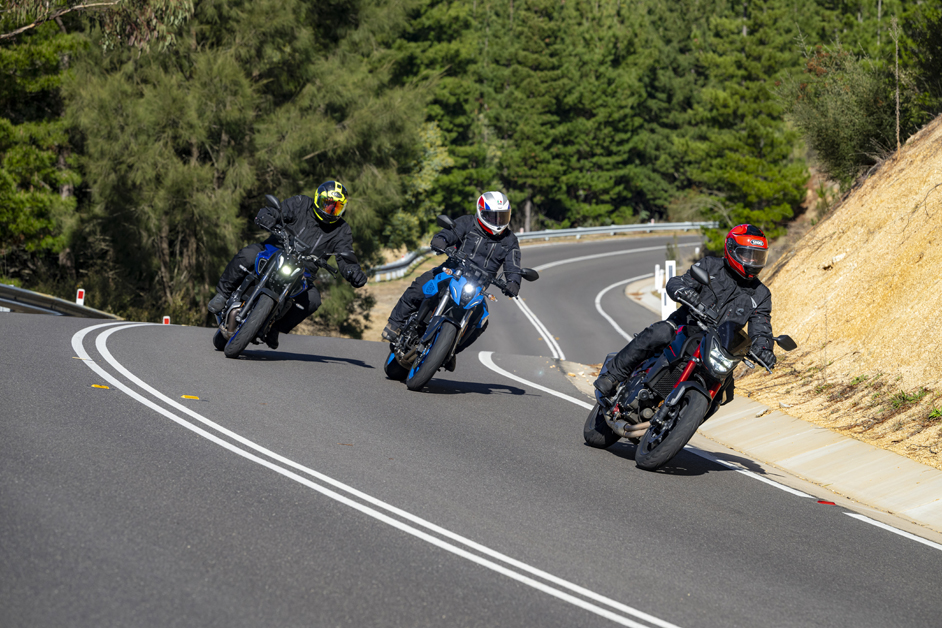
All three run non-adjustable front suspension with a preload adjustable rear monoshock. The Honda runs Showa kit, and the Suzuki and Yamaha KYB equipment. The Honda and Suzuki run a 41mm and 43mm upside-down fork respectively, while the Yamaha makes do with a conventional 41mm fork. Now, call me a wanker, but I want to see an upside-down fork on my 2023 bike, even if it doesn’t offer a whole lot more performance at road speeds – and especially if I’m buying the most expensive bike of the three.
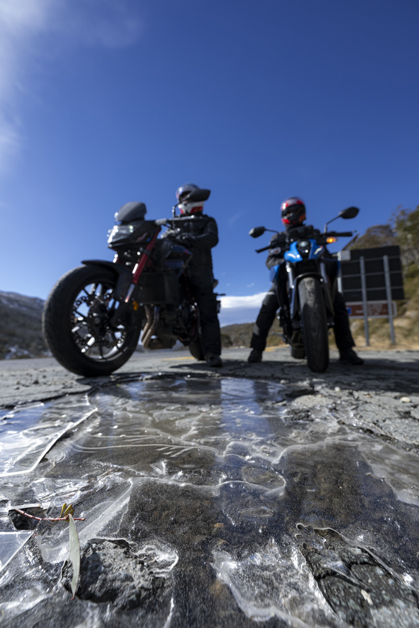
Despite the similar specs, the suspension performance of each is noticeably different. The Suzuki is firm and sporty, the Yamaha soft and comfortable, while the Honda falls in-between the two. As an all-rounder, the Honda is probably the pick of the bunch. Unlike the taut Suzuki, it’s compliant enough to handle bumpy Aussie roads, yet firm enough to still bang in the corners without wallowing and feeling out of its depth like the Yamaha can. Mind you, we were pushing hard, and at a more sedate pace the Yamaha does a fine job of providing a comfortable and compliant ride. That said, if you’ll be using your mount to chase your mates around your local bike roads, the Suzuki in standard guise is the pick, the Yamaha has the goods as an out-and-out commuter, and if you want a jack of all trades the Honda is the go.

On roads where the speeds are higher and the corners are inviting, the Yamaha just can’t match the other two. It feels a bit loose and lacks the stability and balance of the other two.

The stiffer and weightier Suzuki is a proper scalpel on a twisty road and with a few bucks thrown at the suspension, there’s no reason you couldn’t hit the track or give more performance-orientated machinery a big hurry up. Part of the Suzuki’s cornering composure comes down to its sportier Dunlop Sportmax Roadsport 2 rubber as well. The Honda and Yamaha roll on Michelin Pilot 5 tyres, which are a better all-rounder, but lack the outright grip of the Suzuki’s Dunlops.

Braking performance
If you can pick the difference between the three in braking performance, then you’re a better rider than me. At road speeds, there’s nothing in it, but with the Suzuki’s larger 310mm front discs, it’s maybe just a tad ahead of the other two.
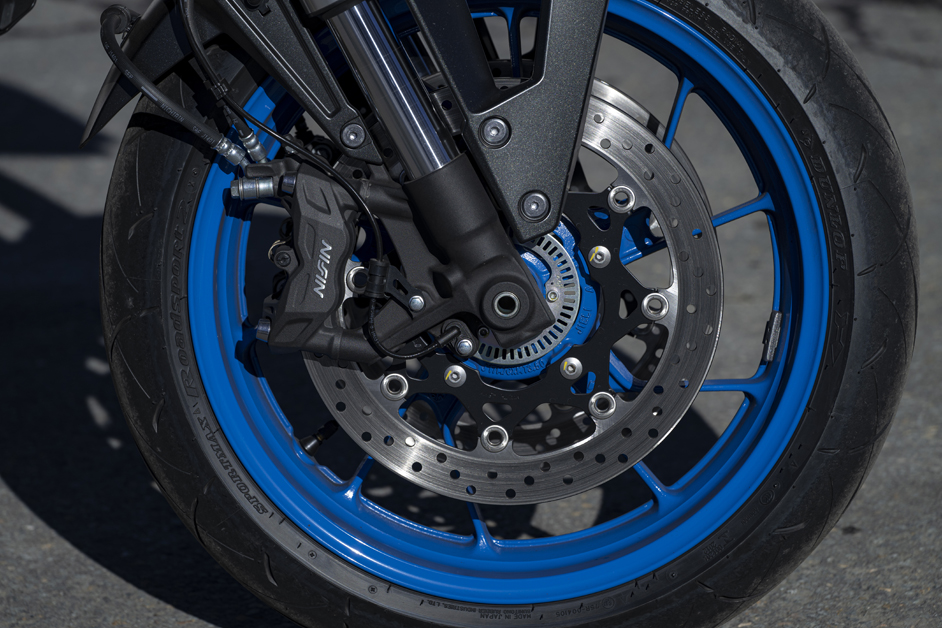
The roads we travelled were icy at times, and the ones that weren’t didn’t really call on extreme braking, so the Suzuki should pull slightly ahead of the other two if the brakes were called on to work hard. The Honda and Suzuki run similar-looking radial-mounted four-piston Nissin calipers, although they’re not identical and run different pads. The MT-07 runs ADVICS non-radial-mounted calipers.

Honda has gone with 296mm solid discs on the Hornet, whereas the other two run superior semi-floating rotors. On the street there’s very little difference in performance between the two styles, especially in the freezing temps we rode in, but if things heat up – say at a trackday or a high-summer play in the hills, you may find that brake fade could come into play on the Honda.
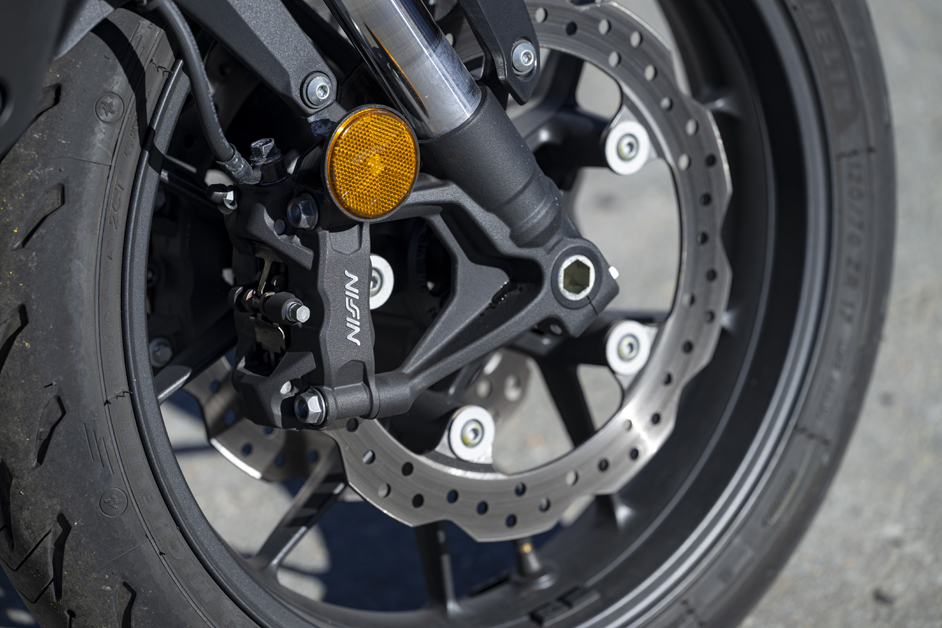
All have good power and feel for this style and price of bike, none provide outstanding brakes, but I had no complaints about stopping any of them. Each bike uses Euro 5-mandated ABS, which I constantly called into action in the sketchy mountain conditions, and all handled it well. The Honda’s ABS is a little more intrusive, so stoppies aren’t really on the cards, but the Suzuki and Yamaha will let you get your bum in the air if that’s your bag. All run rubber brake lines and would benefit from a set of braided lines for even better feel and power.

Ergonomics and comfort
I’ve heard a few people describe these bikes as being the quintessential UJM (Universal Japanese Motorcycle) which isn’t surprising given their similarities, and the rider triangle confirms this. You can easily hop from one to another and not require any time to get used to the feel as they are all remarkably similar. All three are supremely comfortable with a relaxed reach to the ’bars and a leg position that isn’t overly sporty. If it weren’t for the lack of wind protection, you could – and we did – spend a solid stint on any of them in relative comfort.
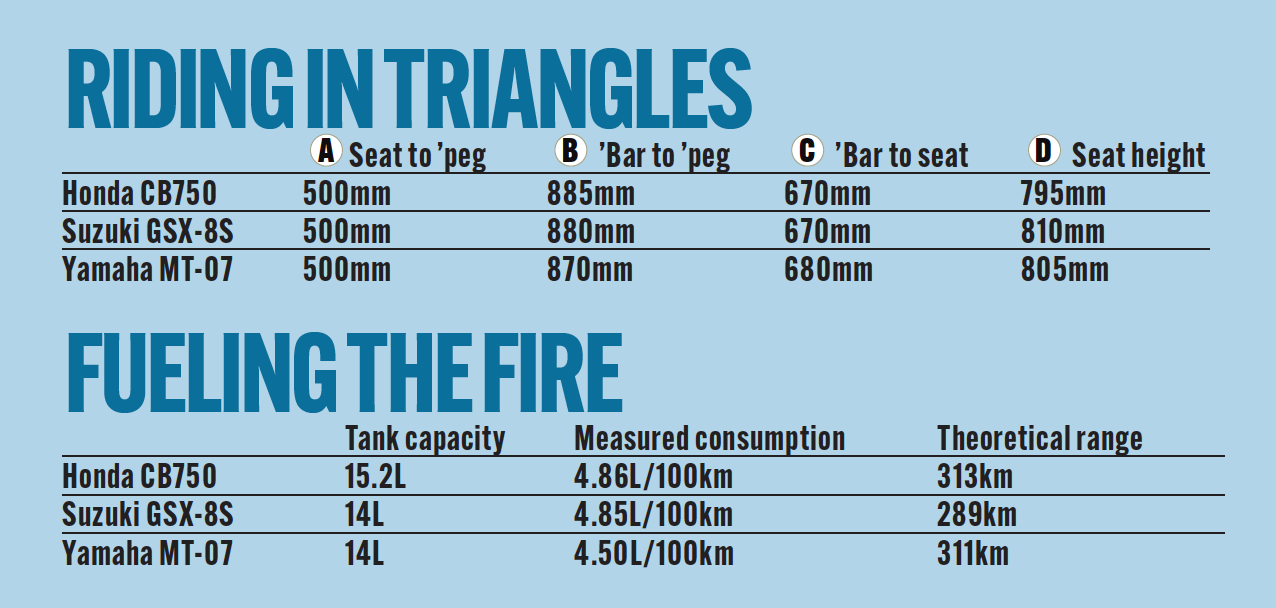
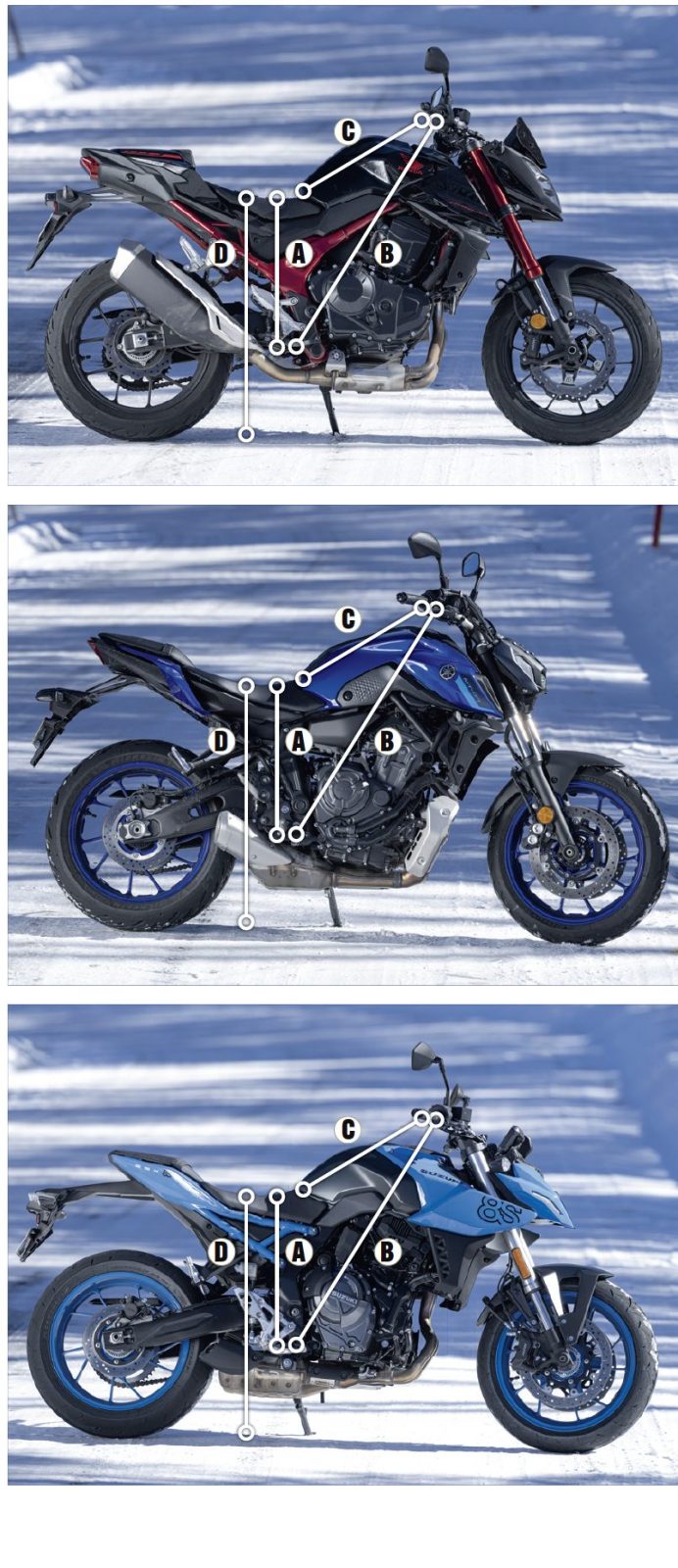
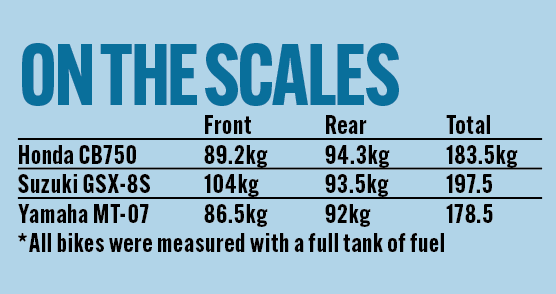
The tank shape on the Suzuki makes it easier to lock your knees firmly in place when you’re hanging off the bike, and at the other end the Yamaha feels a little less reassuring when relying on your grip of the tank to stop you sliding off the thing mid-corner. The Honda sits close to the Suzuki in this regard.
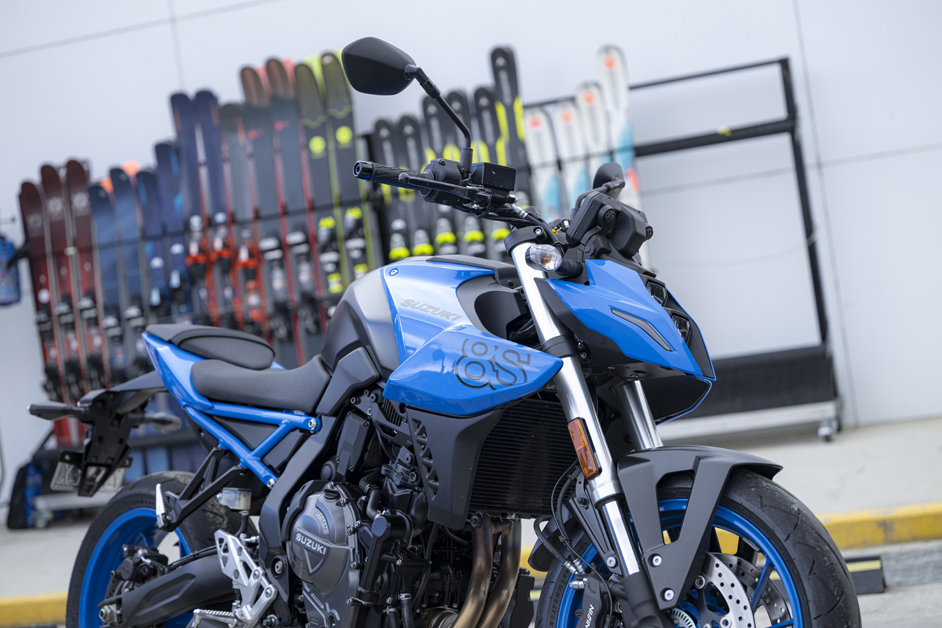
Despite the similarity in measurements, the Yamaha feels like it puts you in a more upright position with less weight over the front, which subsequently puts you in the breeze more and weights the front tyre less. The advantage of that is that you get a slightly more comfortable ride and a more commanding view of what’s going on around you.
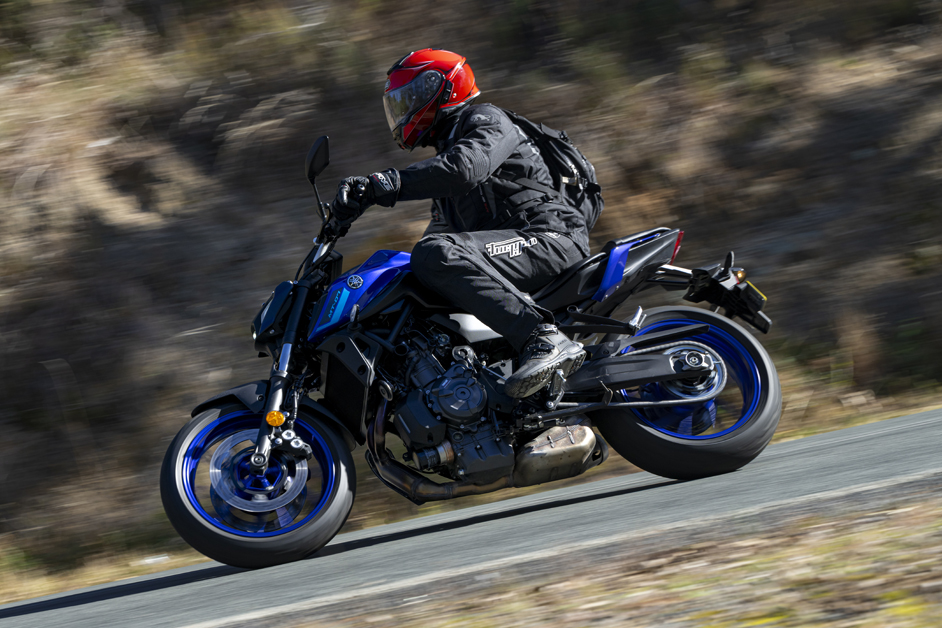
The Yamaha and Honda have a rear weight bias, whereas the Suzuki has a sportier front-end bias which gives the blue machine an edge in terms of front-end feel when you pick up the cornering pace.
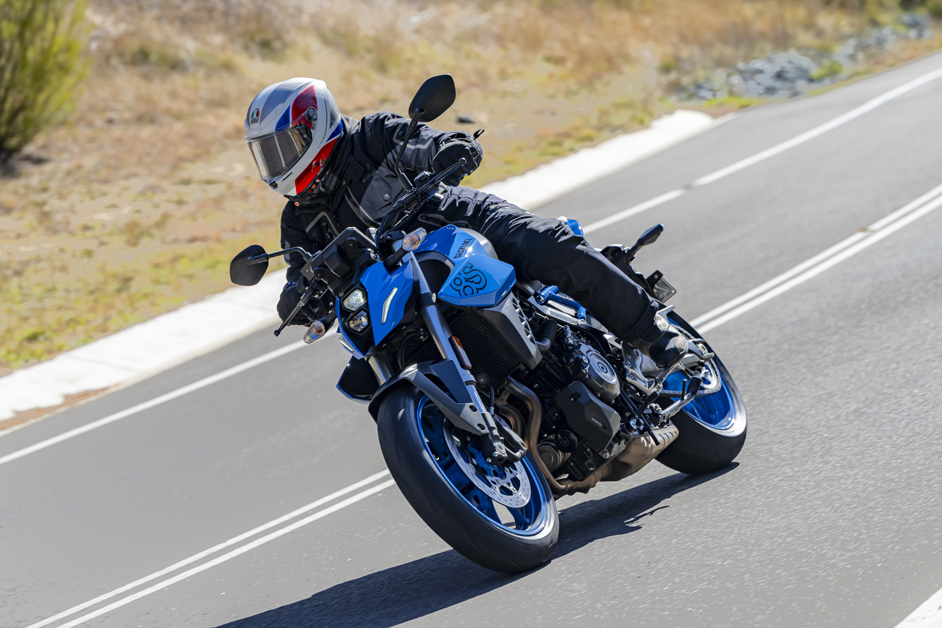
The rear seat position on the Honda and Suzuki can limit the room you have to move your weight back, whereas you can slide back easier on the MT-07 (which is handy for wheelies).

The Suzuki has the tallest seat of the trio (810mm), with the Yamaha coming in next at 805mm. The Honda sits at a worm-burning 795mm and, with its 183.5kg measured wet weight, it’s the pick of the three for less-experienced riders or those with stout legs.
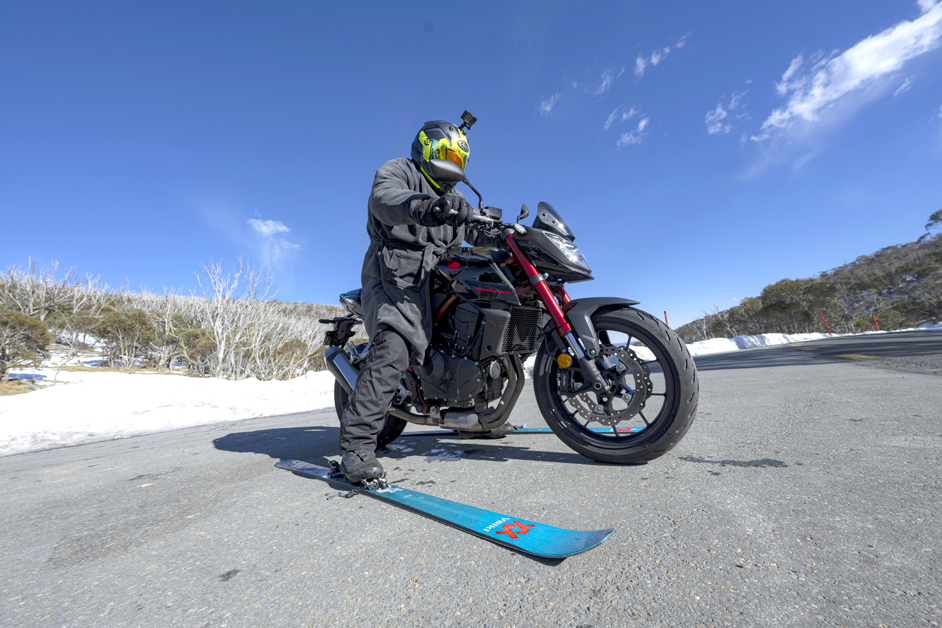
It’s hard to pick a winner in this category. Firstly, because they are so similar, and secondly they each have their pros and cons. The Honda, while low and light, can be a little cramped in the legs for tall riders, but is a great all-round fit. The Suzuki feels slightly sportier without being uncomfortable, and the Yamaha is more upright and relaxed. The Suzuki scored highest between the three, but there’s nothing in it and trying them all on for size is the only way you’ll know what works best for you.
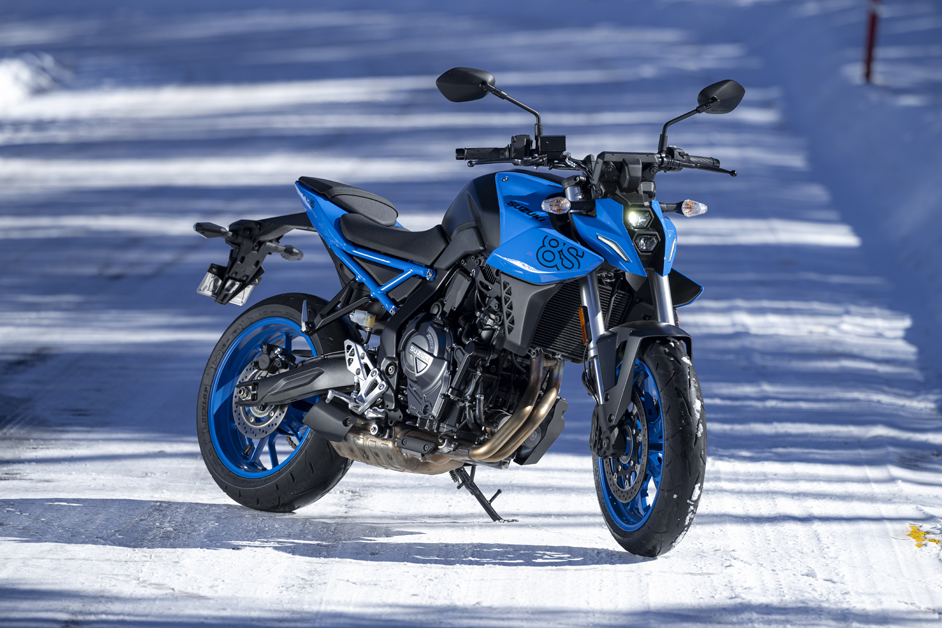
Electronic intervention
In terms of modern electronic rider aids, the Yamaha falls into a screaming heap compared to the Honda and Suzuki. The MT-07 sports ABS and… that’s it for rider aids. The bonus of this is that if, like me, you act your shoe size rather than your age, and like ripping wheelies and burnouts, you can just get on and ride into the sunset without stuffing around with settings.
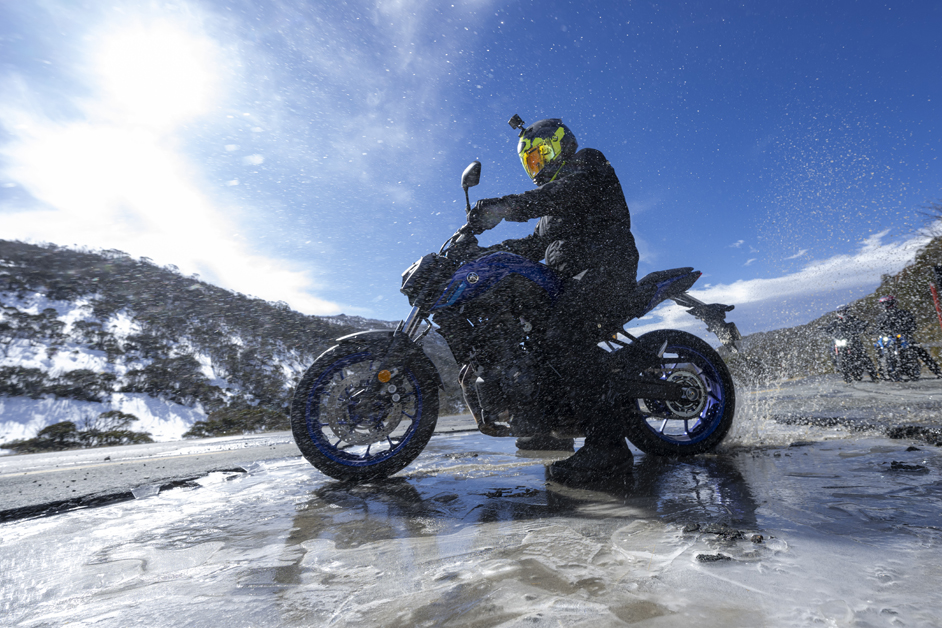
With the relatively tractable and modest power outputs on offer, the lack of traction control is only an issue in the grubbiest conditions and, to be honest, the first thing I did when I hopped on the Honda and Suzuki was to turn the traction control off because… wheelies (I said no letters!). The Honda and Suzuki’s traction control systems incorporate wheelie control which, while useful, I’m not a fan of.
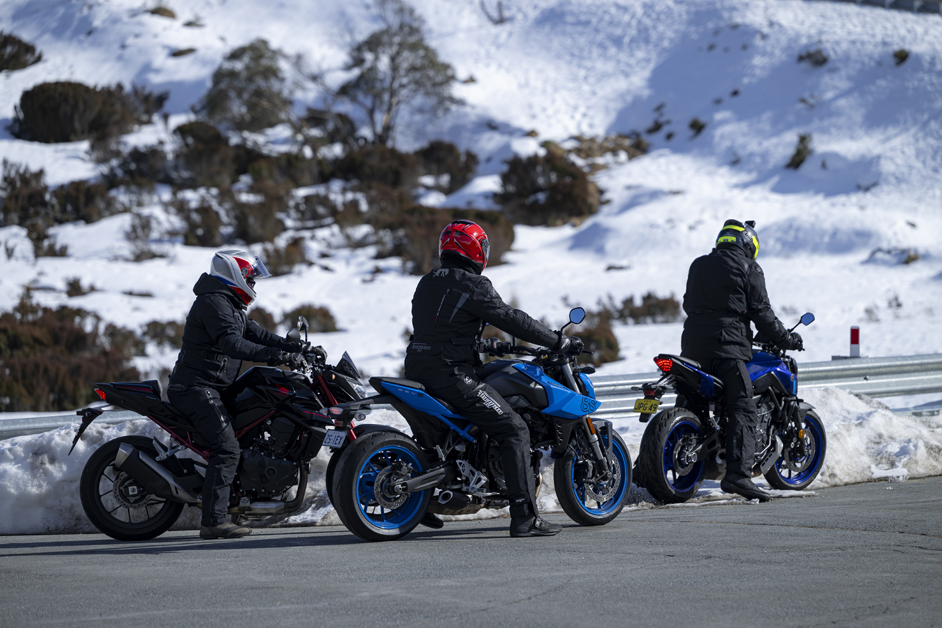
The Suzuki remembers its last traction control and power mode setting so you’re ready to rock on startup. It offers three power modes in A, B, and C, and all three make all the berries available: they just deliver them to you differently. A is the most abrupt and can be a bit touchy on bumpy roads; B comes on a little more progressively, and was my pick; while C is lazy off the bottom and could have been forgotten about had we not been riding on ice.
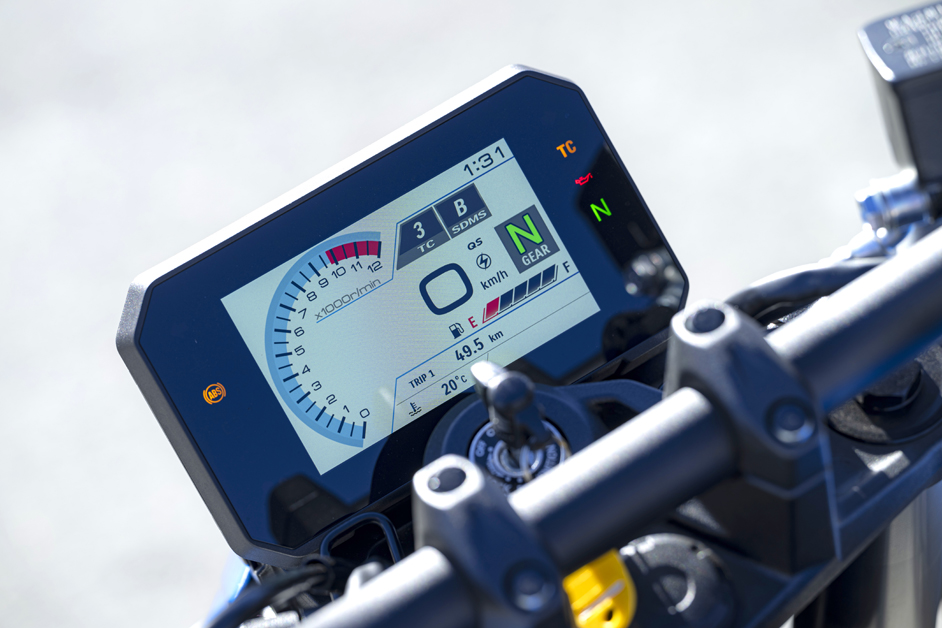
The Honda is the star of the electronics show. As well as three pre-set ride modes (Sport, Standard and Rain), there’s adjustable traction control with built-in wheelie control. It adds engine brake control and a customisable User mode, which lets you set the power deliver, traction control and engine braking to suit your preference.
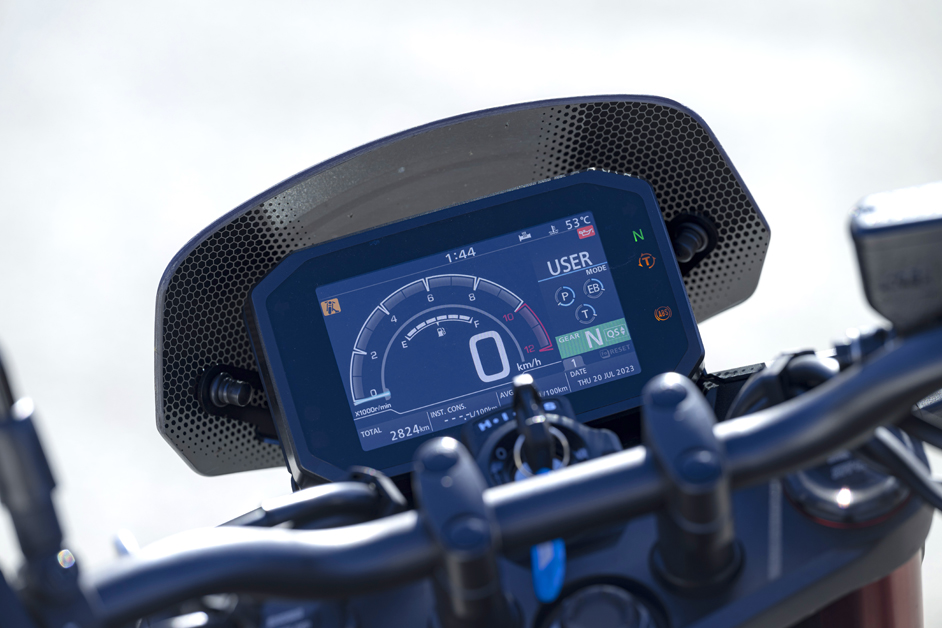
All three run a bright and easy-to-read TFT display and, once you get used to the menus, are also straight forward to navigate. All three also offer Bluetooth connectivity.
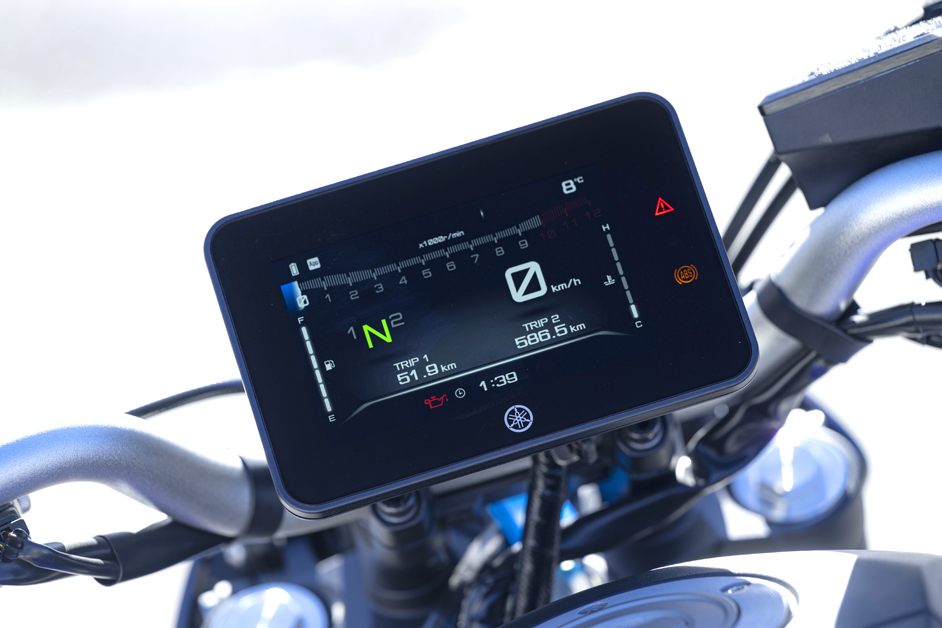
When it comes to the electronics package, the Honda must be the winner. Though the kit that the Hornet has in common with the GSX-8S works just as well, it’s just that’s there’s more of it. The poor old Yammie can’t compete with either.
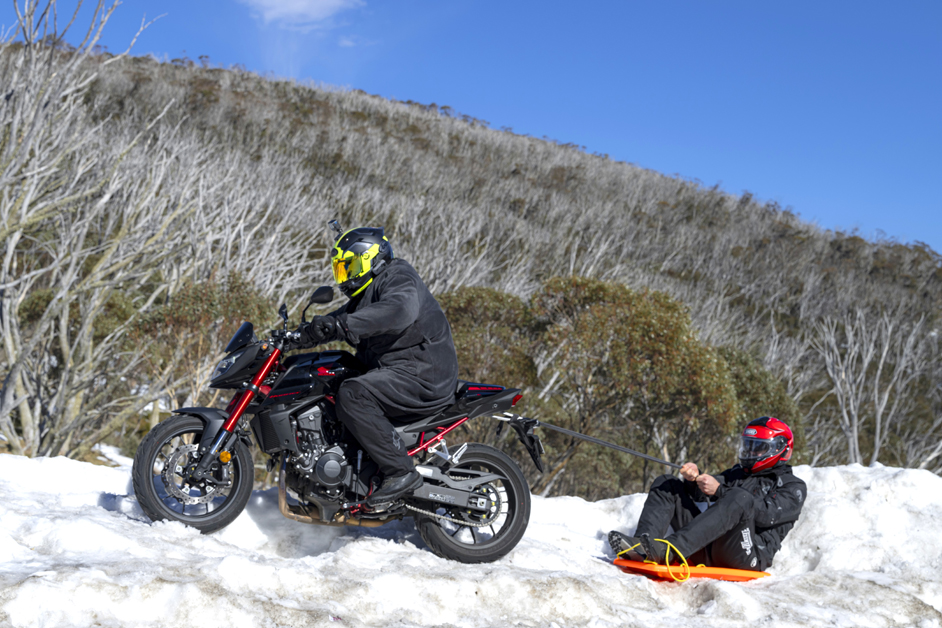
Value for money
Whether you think a naked mid-capacity parallel-twin is boring or not, there’s no denying all three bikes represent excellent value. If you’re taking your first step onto a larger bike after graduating from your Ps, I reckon one of these would be the perfect tool to perfect your craft on before stepping onto something big and menacing.
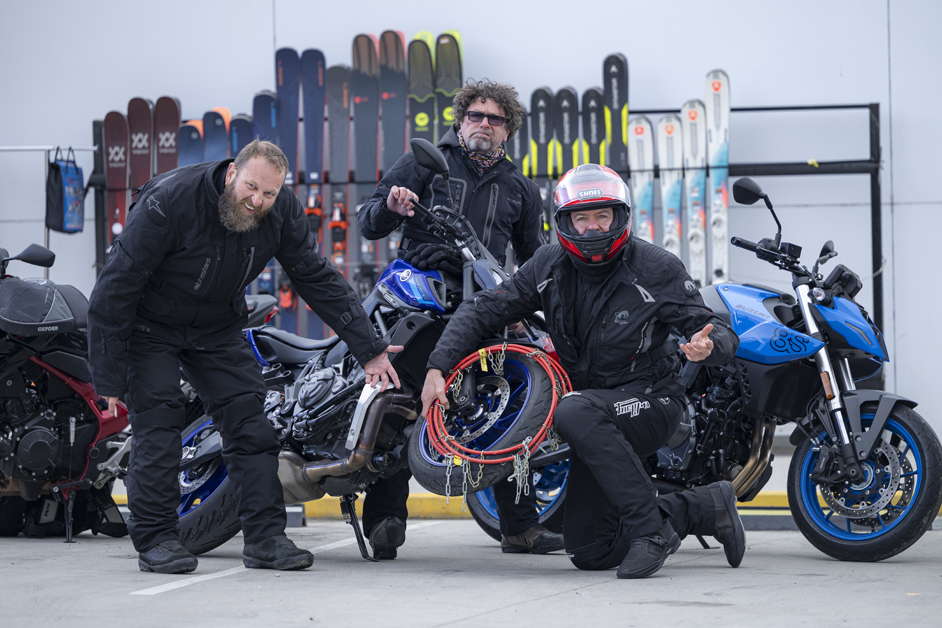
The Yamaha has long been the top dog in this segment, and is still a fantastic bike, but in light of the arrival of the Honda and Suzuki it doesn’t have the equipment to justify the $14,449 (ride away) sticker price. It’s the most expensive of the three and is in desperate need of an update if it wants to retain its current price – or it simply needs to be cheaper.

Next in line is the Suzuki at $14,190 (ride away) and for that you get a bike with better suspension than the MT-07, rider aids, more engine performance, a two-way quickshifter and serious corning ability.
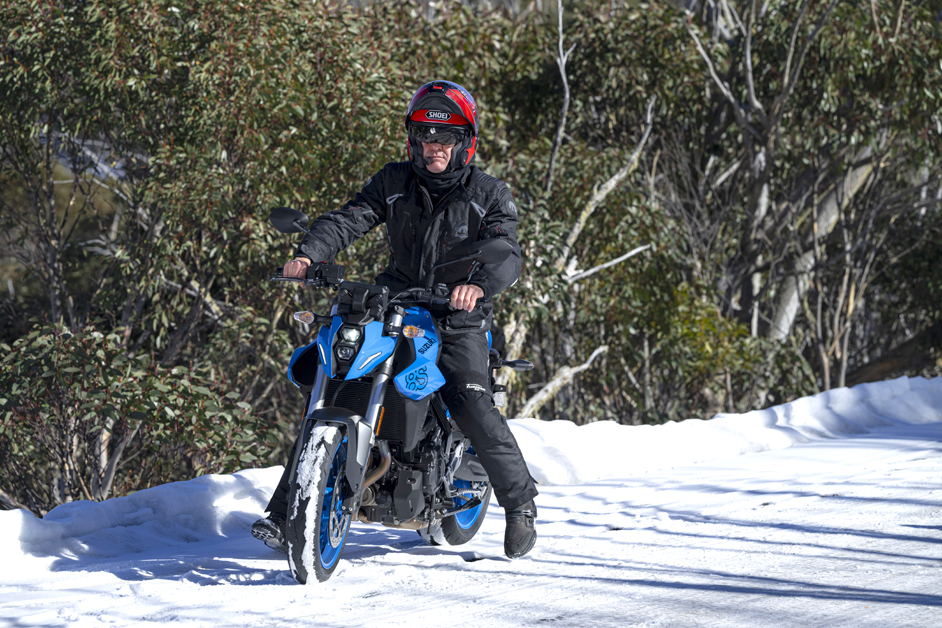
The Hornet is the least expensive of the trio at around $13,500 (ride away), depending on where you hail from. If you spec it to a similar level as the GSX-8S by adding the optional quickshifter you’re still looking at less than $14k (ride away).
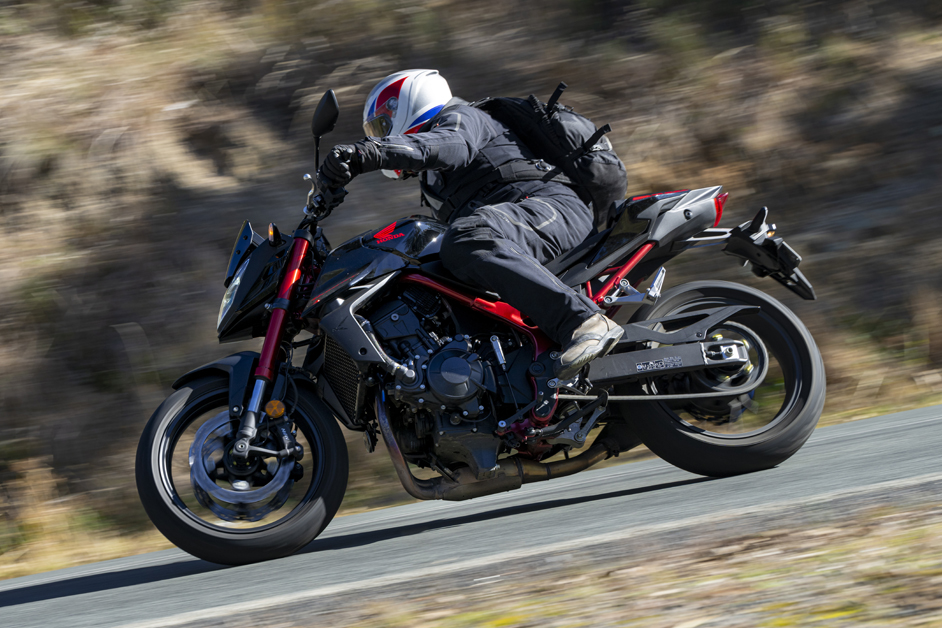
The winner is…
The scores are tallied and there’s only one point in it
So which bike takes the top spot? It’s a tight contest between the Honda and the Suzuki here, but the Yamaha isn’t all that far behind depending on how you plan to use your wheels – it really is its current price that’s letting it down.
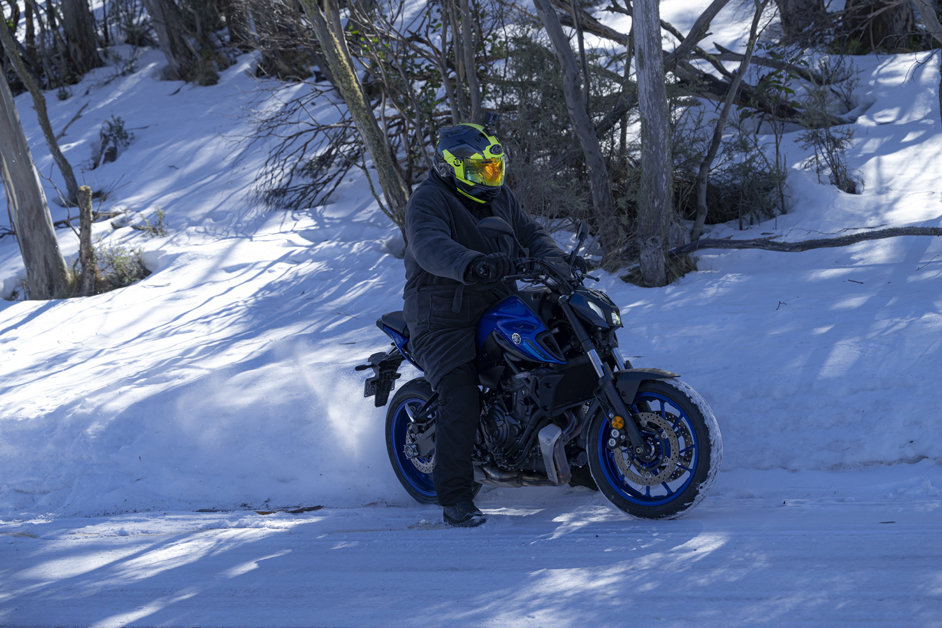
My money is on the Honda, and that’s simply because I had the most fun on it. The handling isn’t as good as the Suzuki’s, and it doesn’t look as good, especially the burgundy frame, but it’s got a great list of features for the price and kept me entertained whenever I rode it.

On the other hand, if I wanted to chase Ralph through the hills, I’d need to be on the GSX-8S. He’s lighter than me by a good margin, and damn fast on the road, and I needed the Suzuki’s handling advantage and quickshifter to make up for my physique handicap.
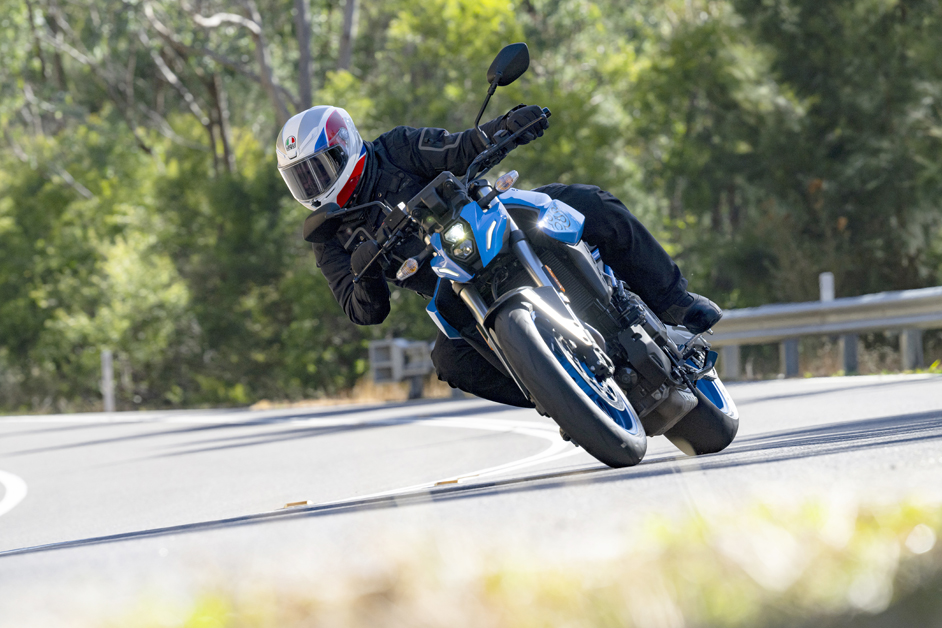
So, which would I plonk in my garage given the choice? The Honda. I just love the engine and subsequent wheelies on the Honda.
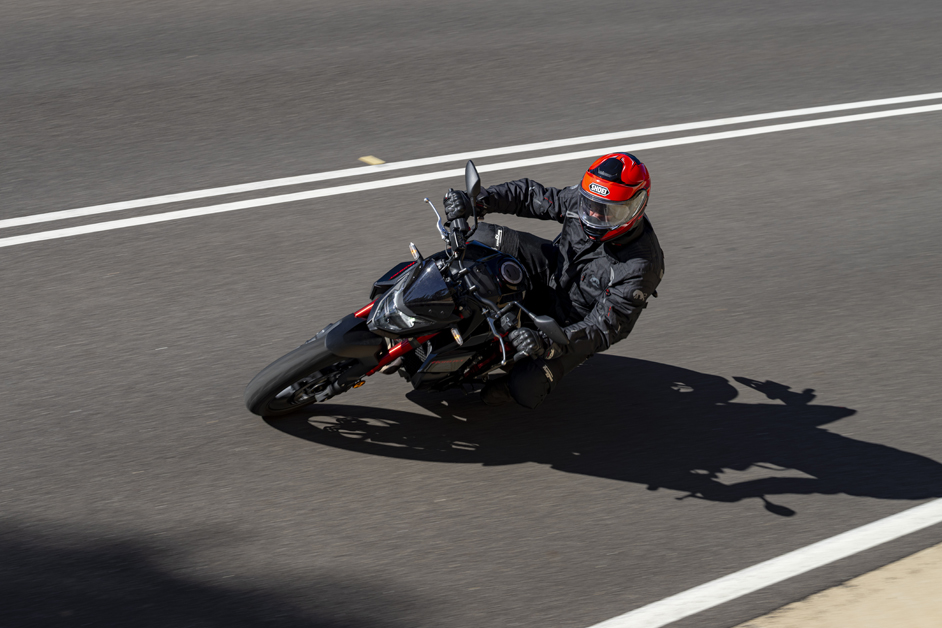
But luckily, the decision isn’t just up to me – the scorecard doesn’t lie. After tallying up the scores from the six criteria, the Yamaha finished on 59 points out of a possible 90, the Honda on 75 followed by the GSX-8S on 76 points.
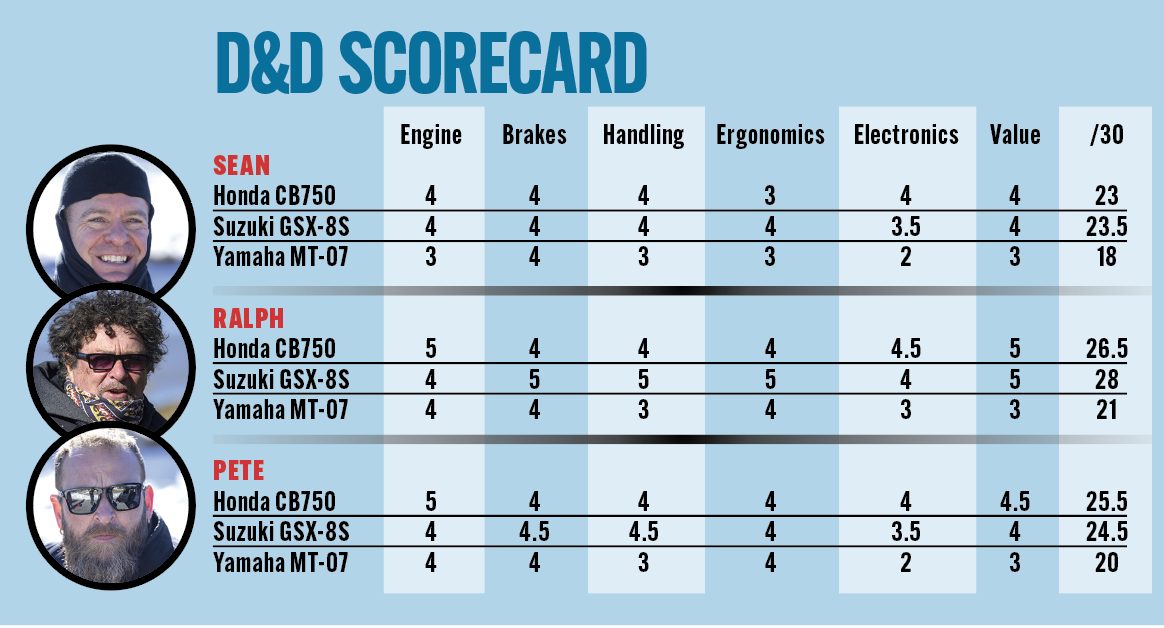
There was only one point in it, and both the Suzuki and the Honda are fine motorcycles. But the GSX-8S pipped the Honda over the line with its superior handling, mean looks and great value for money. There are also the factors of build quality, which the Suzuki exudes, and in comfort levels, which is also better than the Honda if you’re tall.

All-in-all though, all three are fun, capable machines at a great price.
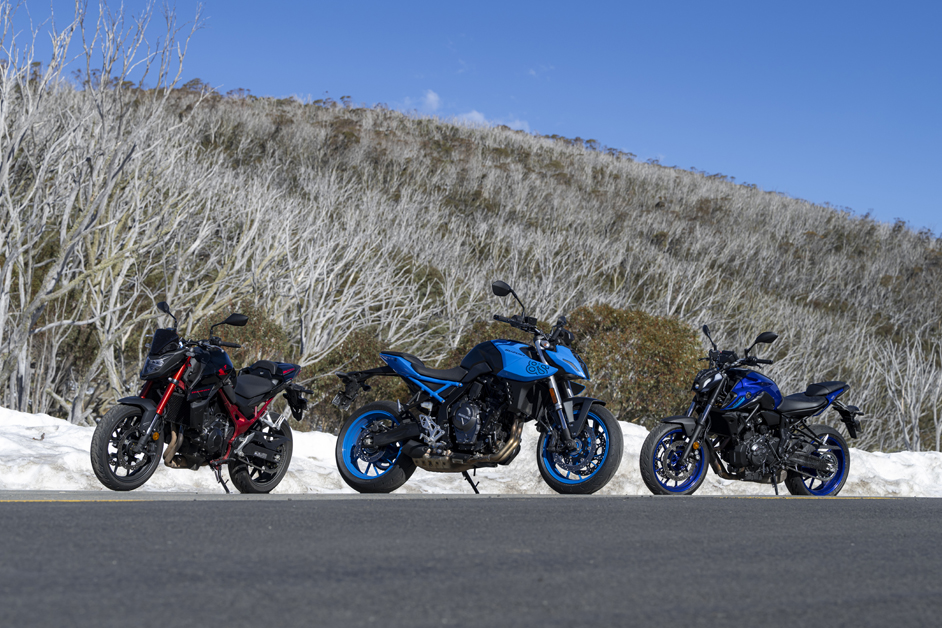
TEST: PETE VORST PHOTOGRAPHY INCITE IMAGES